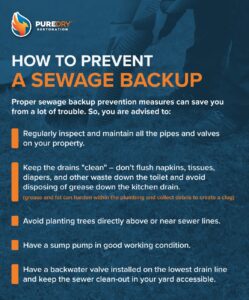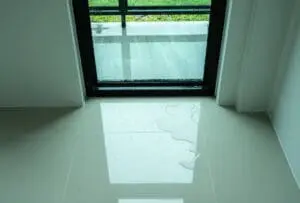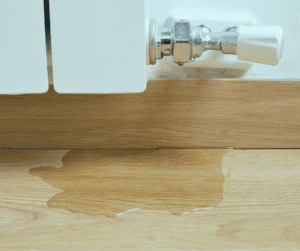Fall: Chilly, atmospheric, and colorful. With snow and rainfall in overdrive, moisture naturally clings to your walls, floors, and cabinets during the colder months. This combination of sensory details makes an unfortunately ideal place for indoor mold growth. Fall is the peak breeding season for mold spores because it creates an overall chillier feeling, practically inviting mold spores to set up shop in your home.
It’s pivotal to check every vulnerable area of your home for mold growth this fall season so you can stay breathing in clean, spirited air. Mold isn’t going to centralize its spread, as it will touch all areas harboring moisture, such as your carpets or picture frames. With these impactful seasonal mold prevention tips from the experts at PureDry, your home will stay successfully safeguarded from unnecessary mold and mildew during the scenic fall season:
WATER DAMAGE RESTORATION 24/7
- 24/7 Calls to a Live Representative
- One Our Way in 60 MINUTES or Less
- Directly Billing to Your Insurance
- Locally Owned & Operated
- Highest Rated Provider in the Seattle Area
- Services – Removal, Cleanup, & Restoration
Conditions for Mold Growth
Your interior structures are made out of the kind of natural materials that feed mold spores, such as drywall or wooden picture frames. It isn’t your fault mold loves a warm, inhabitable environment to call home. However, being aware that mold thrives off of the perfect temperature and oxygen combination that is found inside most homes during the fall season will allow you to effectively shut it out.
Steps To Prevent Mold Growth This Fall
Water damage creates an open environment for mold to stick to. Moisture of any kind is the foundation of spore development, meaning that your home will require immediate moisture removal to effectively block out spore development. Follow these effective steps to prevent mold growth on your property this fall:
Dry areas immediately
Retain a dry, clean surface area by patting down excessive moisture spots. Although you can utilize household tools and techniques to mitigate moisture, we ask that you enlist a professional water damage removal service to successfully dry impacted areas before mold can develop.
Be aware of warning signs
Within 48 hours of water exposure, mold will make its presence known. Either through must or odor, you will be able to tell if your home is experiencing mold in development. Keep watch of these continuous symptoms.
Take a look outside
Sometimes mold growth starts outside and finds its way inside your home. When water leaks from ground level and spreads through your home’s foundation, mold can develop in a larger, more widespread way. Monitor your home’s exterior for a clear picture of mold growth.
Remove damaged materials
Wet materials will be harboring mold for certain, as there isn’t a way for these structures to avoid spores if even grazed by water. Remove already damaged materials and place them in an isolated area as a way to mitigate water exposure. Once the damaged materials have been removed, mold will know that it has to move elsewhere.
10 Tips for Preventing Mold After Water Damage This Fall
Most of the time, untouched mold spores just weren’t noticed fast enough to mitigate them. When water piles up behind cabinets or below the surface within your crawl space, it can be virtually impossible to spot it before mold can develop. These 10 mold prevention tips focus on what to do after water has already damaged your home so you can return to enjoying fall fun:
1. Control Indoor Moisture To Prevent Mold
Like any mold exposure, fall weather requires intentional mitigation. Indoor moisture created by fall weather can make it much easier for spores to develop, as cold weather is maintained within the home. Stop the spread of moisture by stopping leaks, controlling pipe damage, and making sure your exterior drainage systems are all in working order. Although some of these areas work outdoors, they control whether or not your home retains moisture inside.
2. Make Sure Your Bath Fan Is Big Enough
Bath fans are an underrated aspect of effective moisture control. Because showers and baths lift moisture created by hot water up and through your bathroom, walls and tiles will naturally absorb moisture. Mitigate these exposures by having a fully functional, effective bath fan that touches every corner of your bathroom. Upgrade your fan to have a larger reach if it’s not effectively funneling away moisture.
3. Consider “Smart” Bathroom Timers and Humidity Sensors
A great way to stay up to date about the current moisture level of your bathroom is by installing a “smart” or technical bathroom timer. These upgraded humidity sensors allow you to monitor the wetness of your bathroom from anywhere at any time. For local bathroom timer and humidity sensor installation options, reach out to us at PureDry today.
4. Squeegee Your Shower Every Time You Use It
Think of a classic window-wiping tool when thinking about a squeegee. In the same wiping motion, you’ll use this rubbed-edged metal tool to wipe water away from your shower tiles or walls. This will halt mold development for a few months, saving you money on professional mold removal and restoration services. Wipe away water every time you shower for the best upkeep.
5. Clean Visible Mold Immediately
Using a combination of a cleaning tool and a removal solution, clean surface mold from your shower’s grout or tile. The quicker you remove these substances from the source, the faster they will be remediated and unable to reproduce. Use a strong bleach solution and let it sit before wiping it away for a clean, mold-free surface.
6. Use Paint With Mildewcide in Damp Areas
Mildewcide is a mold-killing primer found in most paints. Whether or not you’re currently redecorating or have a can of paint just lying around, mildewcide is impactful enough to remove all mold presence with one swipe. Tackle wet areas with mildewcide’s fast-acting removal power.
7. Act Quickly To Stop a Leak
Remediation is done best when done quickly. Costs, effort, and time spent grow exponentially when water presence is left untouched. Although inconvenient, addressing leaks at the time of exposure allows your property to recover quicker (and for cheaper!). Repair leaking pipes today with a professional service like us at PureDry.
8. Don’t Delay Cleanup
Although rescuing your things may seem like the most important thing, allowing mold any extra time to grow can easily up your restoration bill. Before you think about trying out any DIY restoration methods, make sure to properly remove standing water on-site.
9. But Don’t Act Rashly
Yes, we do recommend that you move quickly when faced with complex water damage. However, many of the areas water spreads into have electrical, plumbing, or septic outlets that can be dangerous when met with water. Verify that all areas you’re moving through are safe before entering.
10. Prevent the Top Causes of Water Damage
Most instances of water damage can be prevented by simply making sure your internal structures are still up and running. Pipes, faucets, and appliances are all powered by water, so it is important to check before the upcoming fall season that they can handle cold weather’s impact.
Have an Emergency? Call Now!
Does Water Damage Always Cause Mold?
Mold indeed goes where moisture goes. However, this isn’t universally proven. In some cases, water isn’t widespread enough to cause mold damage. Absorption also plays a key role in mold development as well, meaning areas where water is simply standing won’t yield mold.
If you can attend to moisture exposure quickly, you can almost certainly delay or stop mold development completely. If the spread of water has been contained, it is unlikely that mold will still be developing below the surface. We recommend looking for all factors that create mold: severity, surface, and absorption for a full picture of your home’s mold condition.
How To Detect Mold This Fall?
Mold detection is simple when you know what will be impacted first. Visually, you can see mold spores lining surfaces holding an excess amount of water. Wet spots, darkened areas, and warm-to-the-touch structures are all examples of obvious mold exposure.
When mold starts to affect your health, you’ll know. Allergens commonly found in mold presence begin to irritate the sinuses, worsening the odors left behind. Block out unhealthy air quality by removing and mitigating mold the second you notice its smell, appearance, or warmth.
What Do I Do About a Mold Problem This Fall?
Once water has settled, there’s really no way to avoid mold. You need to quickly mitigate the situation by removing all standing, puddling, or leaking water immediately. If your unique mold situation requires professional help, it is best to reach out to a locally operated service for an effective solution. Although we trust that you know your home better than anyone, a professional mold removal and remediation service will be able to guarantee a mold-free future for you and your home.
WATER DAMAGE RESTORATION 24/7
- 24/7 Calls to a Live Representative
- One Our Way in 60 MINUTES or Less
- Directly Billing to Your Insurance
- Locally Owned & Operated
- Highest Rated Provider in the Seattle Area
- Services – Removal, Cleanup, & Restoration
Trust PureDry for Expert Water Damage Restoration
For our Seattle clients, when it rains, it pours. That’s why effective, around-the-clock mold removal and remediation is imperative for a quick, healthy home recovery. For those too far to experience PureDry’s technical prowess, reach out to a local mold restoration company for fast-acting removal. Keep the seasonal joy present by blocking out mold development at the source.



